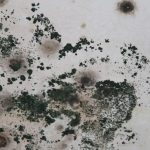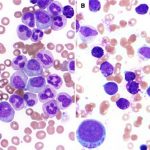A colorless chemical that is sweet to the smell, Benzene is a dangerous chemical that can be found naturally occurring in the environment.
It is also used in a variety of man-made products, such as solvents, paints, dyes, in the petroleum industry, and in a number of chemical and household products.
This chemical has been linked to a number of diseases, including various forms of leukemia, and those put in the highest risk group of contracting leukemia from the chemical are those that are exposed to it regularly as an occupational hazard, particularly those that work with petroleum based solvents, as they can inhale the vapors as well as be subjected to exposure through the skin.
One type of leukemia that is linked to Benzene exposure is a cute lymphocytic leukemia, which is also known by a number of other names such as lymphoblastic leukemia or acute lymphoid leukemia.
This is just one form of this type of cancer, with several thousand cases diagnosed every year in the United States alone.
This variation is actually prevalent in children, although it can be contracted by a person of any age. Although in some cases the cause of this cancer is unknown, what is known is that it is not inherited.
Also known is the fact that it can stem from exposure to toxins such as Benzene before birth or as a baby.
This type of leukemia is entails the patient’s bone marrow producing a high number of immature white blood cells, known as blast cells. The bone marrow is responsible for the production of red blood cells, white blood cells, and platelets.
However, a defective bone marrow produces a high number of immature white cells and can therefore not produce enough healthy red and white cells or platelets.
There are a number of symptoms associated with this variation of leukemia, and these include:
- Symptoms of lack of red blood cells: tiredness, a very pale complexion, and shortness of breath.
- Symptoms of lack of platelets: excessive bleeding, a tendency to bruise easily, and a delay in healing.
- Symptoms of a lack of white blood cells: increased infections, bone or joint pain and discomfort, and feverishness.
Some patients may display few or none of these symptoms, and therefore it is often through blood tests that AML is detected. This is done by the examination of bone marrow tissue and blood samples.
Treatment
The course of treatment for a cute lymphocytic leukemia is determined by assessing a number of factors. This includes the variation of the cancer, the age of the patient, the general health and medical history of the patient, and where the blast cells have collected.
With a cute lymphocytic leukemia, the cancerous cells can also collects in the brain and spinal cord, and this can play a part in the eventual treatment administered.
However, initial treatment entails strong chemotherapy, where drugs are administered to eliminate the leukemia cells and to try and encourage normal production of blood.
The drugs may be injected around the spinal cord with this variation of leukemia, and this is because of the tendency for the cancer cells to collect in this are with a cute lymphocytic leukemia.
However, as well as killing off leukemia cells, the drugs used can also affect normal cells, which can lead to further treatment being required.
Once the cancer has gone into remission, which for many patients is within several weeks of chemo, long term options need to be looked into.
Longer term treatment options for this form of leukemia can entail further chemotherapy or may entail a marrow or cell transplant, and this is something that will be determined by specialist medical staff once the induction period has ended and the cancer has gone into remission.






